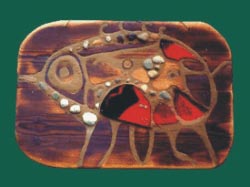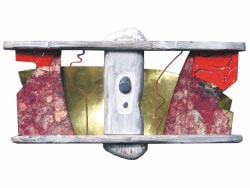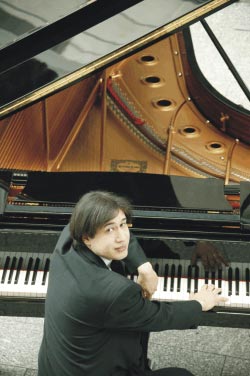
 
Amir Tebenikhin
|
The Art of enamel
Enamel (from the French word - email; Russian - finift) is a durable glasslike covering fused to the metallic object through the process of firing. Russian Encyclopedic Dictionary.
Even though the vast majority of the viewers are not very well acquainted with artistic enamel, the artwork executed in this fire technique highlights some of the world's most respected museum collections, including Moscow Kremlin, The Hermitage, and the Louvre. The enamel arts of ancient China, India, and the Byzantine Empire are very well known. In Russia, the Rostov’s miniature enamel is a famous traditional art form.
Enamel developed in ancient Egypt and is considered to be one of the oldest materials, just like glass and ceramics. It evolved through centuries and new techniques of cloisonné, champleve, and plaque, plique-à-jour enamel have been developed. Enamel is basically colored glass applied to a sheet of copper silver or gold, and fired in a special regime. It is a lengthy and difficult technological process: every layer is applied separately, dried, and then fired at a temperature of 850 degrees. Fusion of glass and metal creates a surface resistant to time and surroundings. It does not fade or loose its shine, and shares qualities of both glass and metal.
In the medieval Europe enamel was an elite art form. It was used for decoration of crowns and other objects for royalty and clergy. In the twentieth century scientific progress gave uplift in technique advancement: enamel paints became more available, the sizes of the artworks increased, and the palette of enamel paints became more diverse. Contemporary artistic enamel has wide possibilities for experimentation, combining traditional ways with new and unexpected techniques. An important aspect of working in enamel is its framing. Traditionally enamel was framed in gold and silver. In the twenty-first century, artists began to combine enamel with precious metals as well as with new materials such as plastic, wood, and leather.
Bright and vivid colors of enamel, its versatility, and compatibility attract all different types of artists with Mikhail Selishchev being one of them. After receiving a good academic education in Moscow (specialization of painting in the architectural environment), he decided to follow a path of creativity and experimentation. This explains his passion for the ancient fire technique of enamel. This catalogue presents majority of the author’s works carried out in the past 15 years.
|